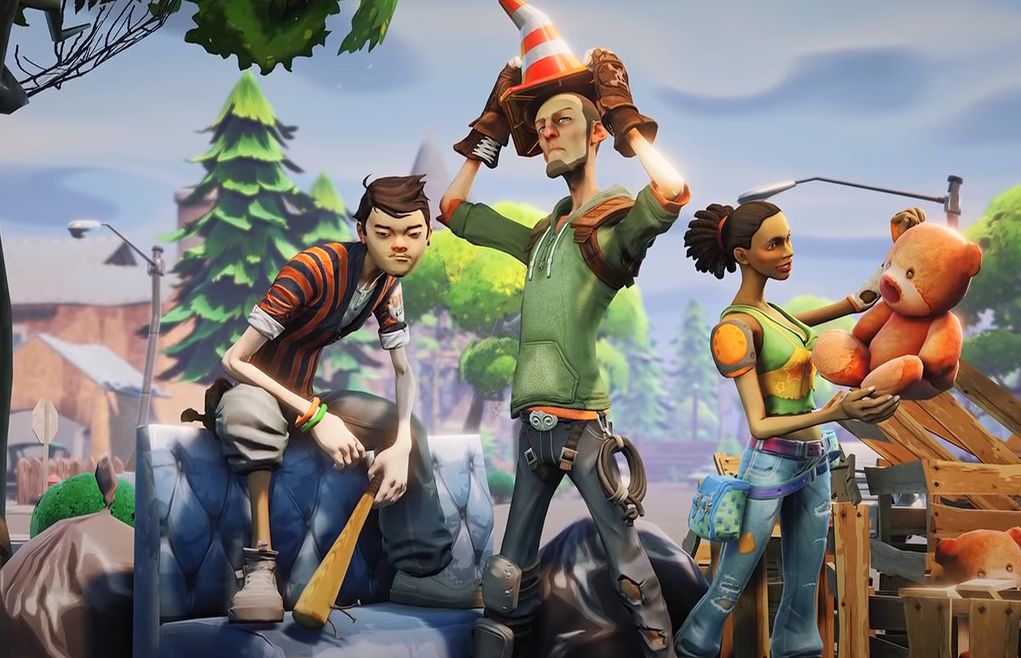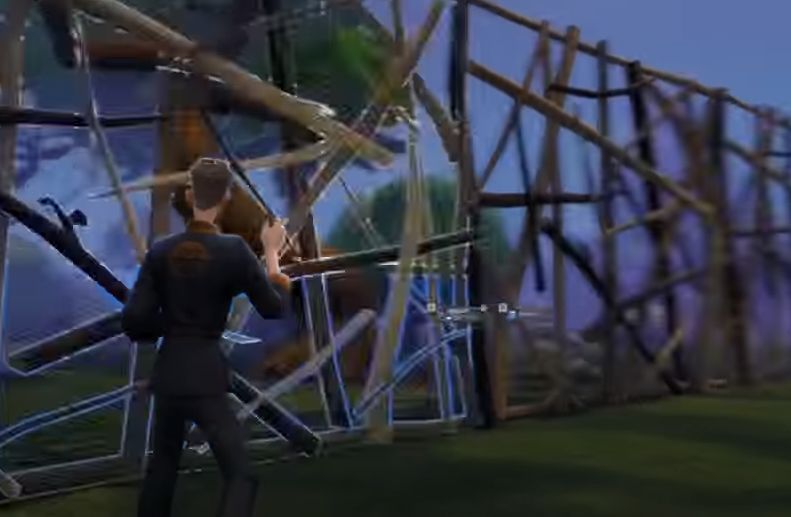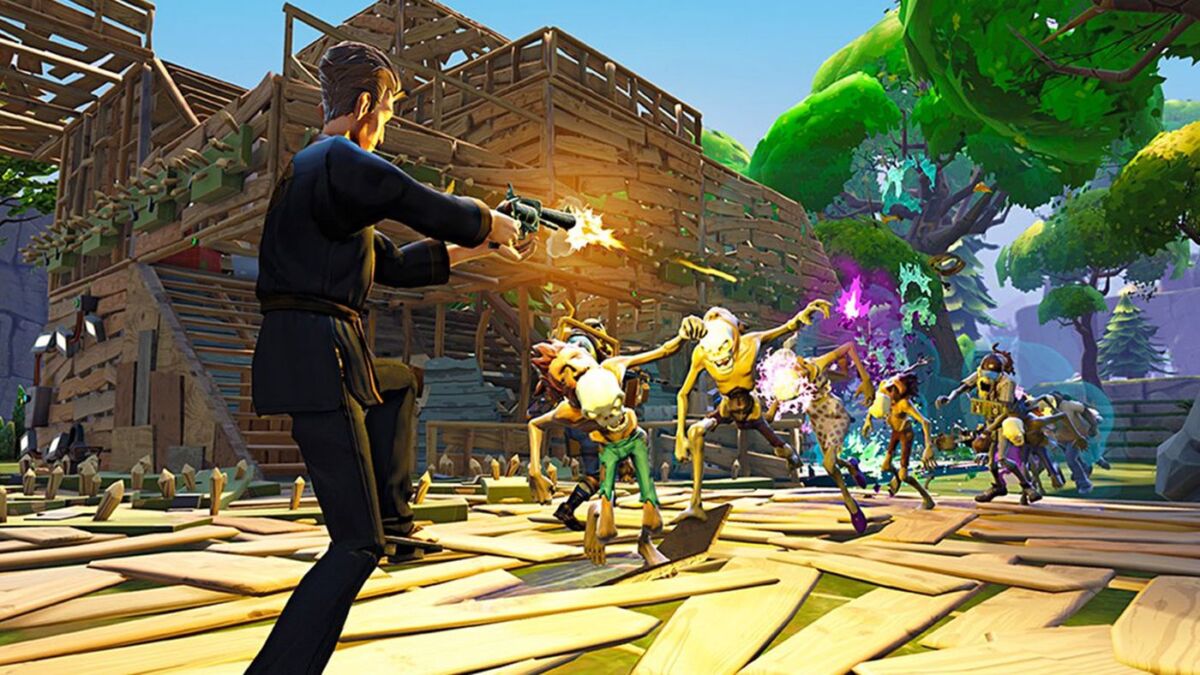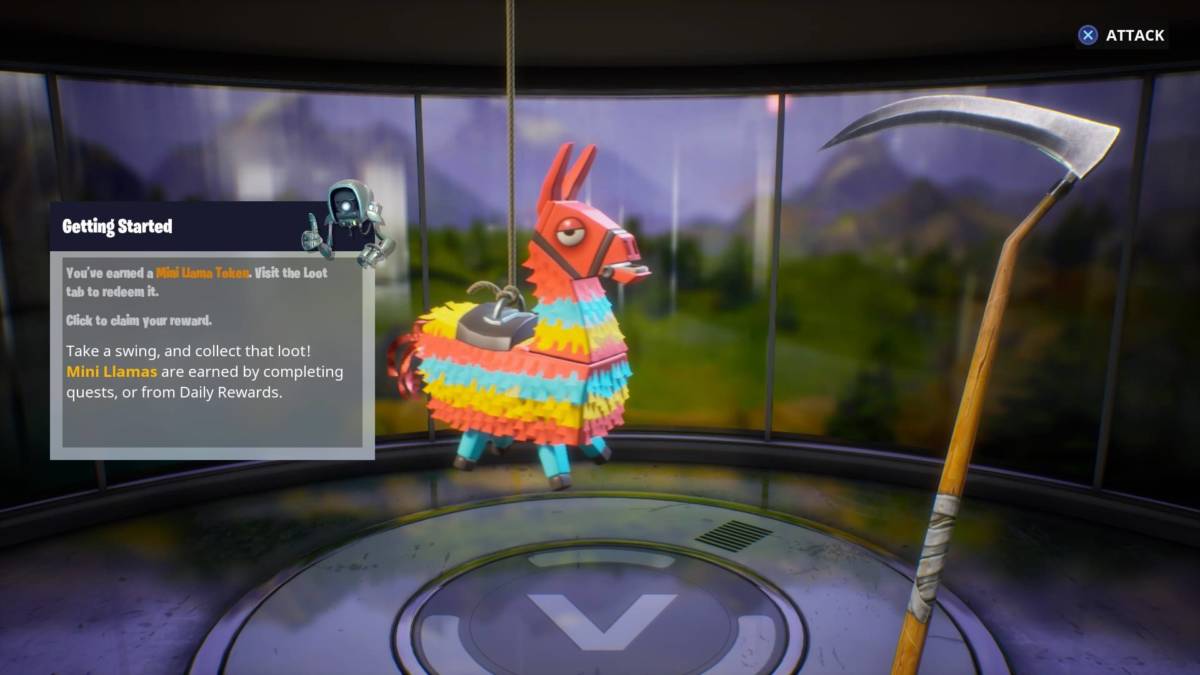You all know what Fortnite is by now. It’s a battle royale game, a place to create your own games, and somewhere you can go if you need to be reminded that the current generation of young gamers are absolutely cracked out of their minds. But how did Fortnite begin?
From mysterious delays to surprising beginnings all the way up to the giant pop culture property it is now, Fortnite’s history is almost as interesting as playing the game itself. Here’s how Fortnite became Fortnite.
Who Came Up With Fortnite?

Despite what you might have read or heard, there’s no one person who can take the credit for coming up with the idea for Fortnite. Not Tim Sweeney, not Donald Mustard, not Cliff Bleszinski.
Instead, it was the product of an internal game jam in 2011 shortly before Gears of War 3’s release, which would actually be the last game Epic would fully develop and not publish themselves.
However, Fortnite itself wasn’t actually conceived as part of the game jam, just some of its concepts. Who came up with the Fortnite name and the overall package isn’t credited to one person, so there may be an ex-Epic employee out there right now who is kicking themselves when looking at how huge the game has become.
With Terraria and Minecraft as influences, the latter of which would follow the game all the way up to and after the game’s release, Epic set to work on creating their next hit.
The Early Days of Fortnite

Believe it or not, Fortnite was due to be a lot darker, almost to the point of being a horror game. Early concepts featured zombies, gore and an overall much more morbid tone, but Epic switched closer to the cartoonish style we know today before too long to help the game stand the test of time better, and also because it was easier to develop.
As for the name, it took Epic a lot of brainstorming to arrive at Fortnite before an email thread between employees provided the lightbulb moment, but who exactly came up with the Fortnite name is still unknown. If you’re curious about the intentional misspelling, that was just “the flavour of the game”, flavour that has been confusing parents worldwide ever since.
With little but concepts drawn up (and even those were bare bones), Cliff Bleszinski, lead designer on Gears of War and industry maverick, announced Fortnite as part of the 2011 Spike TV Video Game Awards, along with the very first trailer for the game.
“We’ve had amazing success with games like Gears of War and Infinity Blade this year, but we decided it was time to switch things up a little bit and do something different and fun,” said Bleszinski at the time.
“Imagine a world where you explore, you scavenge, you build and ultimately you survive.”
(Cliff Bleszinski left Epic just under a year later to go into semi-retirement from the games industry before returning to form Boss Key Productions in 2014. Inspired by the success of Fortnite and other battle royale games, Boss Key would release Radical Heights into alpha in 2018 in a last-ditch attempt to survive the company, but it wasn’t successful.)
The trailer was simple, it showing survivors building themselves a shelter from zombies from a camcorder perspective. While not a massive hit in a show that also saw the surprise reveal of The Last of Us among others, Fortnite’s first trailer was intended to show people that Epic weren’t just the Gears of War guys. However, Donald Mustard, Fortnite’s creative director, would later reveal that the game came together just three weeks after Epic had put together the first design doc.
With Fortnite’s name out in the world and a little bit of momentum behind them, Epic expected the game to have a quick development cycle — it was anything but.
Fortnite In Development Hell

Following the cinematic reveal, it’d be another six months until Fortnite would get another outing in a behind closed doors gameplay showing to press at the San Diego Comic Con 2012. While reported (there’s sadly no footage from the demo out there anywhere) as being rough around the edges, the basics of Fortnite were there to see already: harvesting and building.
Cliff Bleszinski also said at the time that Fortnite would be a PC exclusive and that it’d be the first game developed using Unreal Engine 4, but apart from that, Fortnite was still kind of a mystery to the general public.
Fortnite would remain in the shadows for two whole years before appearing on the cover of Game Informer in May 2014. 2012-2014 was a bit of a rough, uncertain period in Epic’s history following Tencent controversially acquiring 40% of the company for $330 million, which seemed to be the catalyst for a lot of Epic’s biggest names, including Cliff Bleszinski and Rod Fergusson, to depart, leading to a lot of restructuring within the studio.
This restructuring, along with the growing scope of the game, is often cited as why Fortnite was AWOL for so long. Fortnite also drastically increased in scale, going from a straightforward action game to something far more complex that would keep players invested for a long time. Epic hired developers from the MMO world to help morph Fortnite into an RPG featuring progression, deep upgrades, and broad multiplayer integration that would last the distance.
The Game Informer coverage was the best glimpse at Fortnite yet, with tonnes of features on all of the classes, enemies, and even some hands-on impressions of the game in which it started to look a lot like the Fortnite we know today. It was also revealed that Fortnite was due to launch in 2014 as a free-to-play game.
That wasn’t to be. Three more years ticked by before Fortnite would eventually release as the game continued to be moved up and down the priority list for Epic, as well as its vision and scale constantly shifting. Fortnite was basically the Swiss Army Knife that Epic kept forgetting they had.
Epic were busy with other projects at the time, namely Paragon, a notoriously unsuccessful MOBA that was eventually killed off as a result of Fortnite’s success compared to its own. Ironically, Fortnite’s fans, some of whom were getting to grips with the game in stress tests in 2016, were concerned at the time that Paragon would overshadow Fortnite. While Paragon survived just fine on its own at the time of Fortnite’s initial release, its cancellation was announced just five months after the release of Battle Royale. Paragon’s assets were released for free following its cancellation, eventually leading to the development of Predecessor, a spiritual successor currently in development from Omeda.
(Interesting sidenote: In 2015, it was announced that Epic Games’ subsidiary, ChAIR, would develop a game with J.J. Abrams called Spyjinx that was due to launch on PC and mobile in 2016. Donald Mustard, the main creative force behind Fortnite, was one of the co-founders of ChAIR and seemed to be working closely on Spyjinx before he would become the Worldwide Creative Director of Epic Games. After years of near silence, Spyjinx was revealed as solely a mobile game and launched into beta for select regions before being removed from iOS storefronts following Epic’s dispute with Apple. It’s been pretty much nowhere ever since.)
Fortnite’s Release, Many Fortnights Later
Following the aforementioned stress tests and a pretty massive PR cycle to remind people that it was a thing, Fortnite finally got its release date: July 21st, 2017. Well, kind of.
You see, Fortnite was a free-to-play game that had a paid beta, a concept that is still utterly ridiculous to this day. Players could purchase different editions for different rewards in-game, including Founder’s status for free V-Bucks and cosmetics, and that was the only way to play what would eventually become a free game. Fortnite’s PVE would never go free-to-play as promised, with players these days able to buy different packs to access it instead.
Fortnite received a warm reception from critics with plenty praising its style and unique building mechanics. However, it was pretty broadly criticised for its almost overblown gameplay systems, repetitive gameplay systems and monetisation practices in the form of loot boxes. Our review at the time critiqued it for being a bit of a grindfest, as well as having some rather clunky controls and generally not being fun when played solo.
(As an example of just how much BR has consumed Fortnite over the years, there are very few reviews of Fortnite that are actually for the game it launched as, with most of them being updated to be all about the BR instead. PC Gamer just nuked its old review about Save the World, for instance. That’s almost the saddest thing I’ve ever seen.)
Commercially, the common belief is that Fortnite underperformed at the time of launch, but it did reach 1 million players within a month, which isn’t a bad figure at all. It didn’t seem to stick in the public consciousness all that well, though, leading to a lot of concerns over its long-term appeal. You can see a definite dip in people searching for the game on Google shortly after its release.
Along Came A PUBG

As Fortnite released and most people glanced over in its direction and wondered what it all meant before looking elsewhere, there was another kind of storm brewing: the battle royale.
While far from the first BR, PlayerUnknown’s Battlegrounds (PUBG) quickly became an absolute phenomenon after its launch into Steam Early Access, putting up player figures that haven’t been replicated since, even when people were stuck in their homes and all kinds of gaming records were being broken. Players really responded to its last man standing gimmick, with PUBG being at the top of Steam charts for concurrent players and being everywhere you looked. Really, the incredible breakout success of PUBG deserves its own article.
It was this success that saw Epic Games basically piecing together a BR counterpart in just two months, with work starting almost the second the main game had released into Early Access. Fortnite’s BR was actually intended to be locked behind a paywall as another incentive for people to buy into its paid beta, but Epic changed their minds two weeks before launch. Development was aided by some members of the Unreal Tournament team with Battle Royale launching on September 26th, 2017 for PC, PS4, and Xbox One.
Fortnite: Battle Royale was clearly inspired by PUBG at the time of launch (right down to the teamkilling), but it separated itself with its own, for lack of a better word, weirdness. You couldn’t rocket ride and dance on your enemies in PUBG, that’s for sure, and you also didn’t have to have a high-end PC or money to run it either. Being free may have been the biggest weapon in Fortnite: Battle Royale’s locker at launch.
Perturbed that someone was trying to claim a slice of their gigantic pie, Bluehole, the team behind PUBG, actually sued Epic for copyright infringement after Donald Mustard outright mentioned PUBG was an influence, but it didn’t hold up and the lawsuit was dropped later in the year. Funnily enough, PUBG also used the Unreal Engine with Bluehole also later being partially acquired by Tencent, the megacorporation who had purchased a large stake in Epic six years earlier. Both games coexisted despite the animosity, and both still flourish to this day, despite what the dead game memesters on social media may lead you to believe.
And the rest, as they say, is history. “Classic” Fortnite was renamed to Fortnite: Save the World, and it wasn’t long before Battle Royale came to be known as simply Fortnite, the metaverse swallowing monolith that we all know.
Epic have become an especially private company in the years since Fortnite blew up, so it’s a shame that we can’t have a more in-depth look into the past of Fortnite. But even if they were to open their doors, nobody involved with the company, past or present, could tell you with a straight face that they envisaged Fortnite becoming what it is today.
And if you’re ever bouncing ideas around in a email thread, be sure to screenshot.
Fortnite is free-to-play on PC via the Epic Games Store, PlayStation 5, PlayStation 4, Xbox Series X | S, Xbox One, Nintendo Switch, and Android.
MORE FORTNITE: 5 Best Fortnite Box Fighting Creative Codes
Some of the coverage you find on Cultured Vultures contains affiliate links, which provide us with small commissions based on purchases made from visiting our site.


